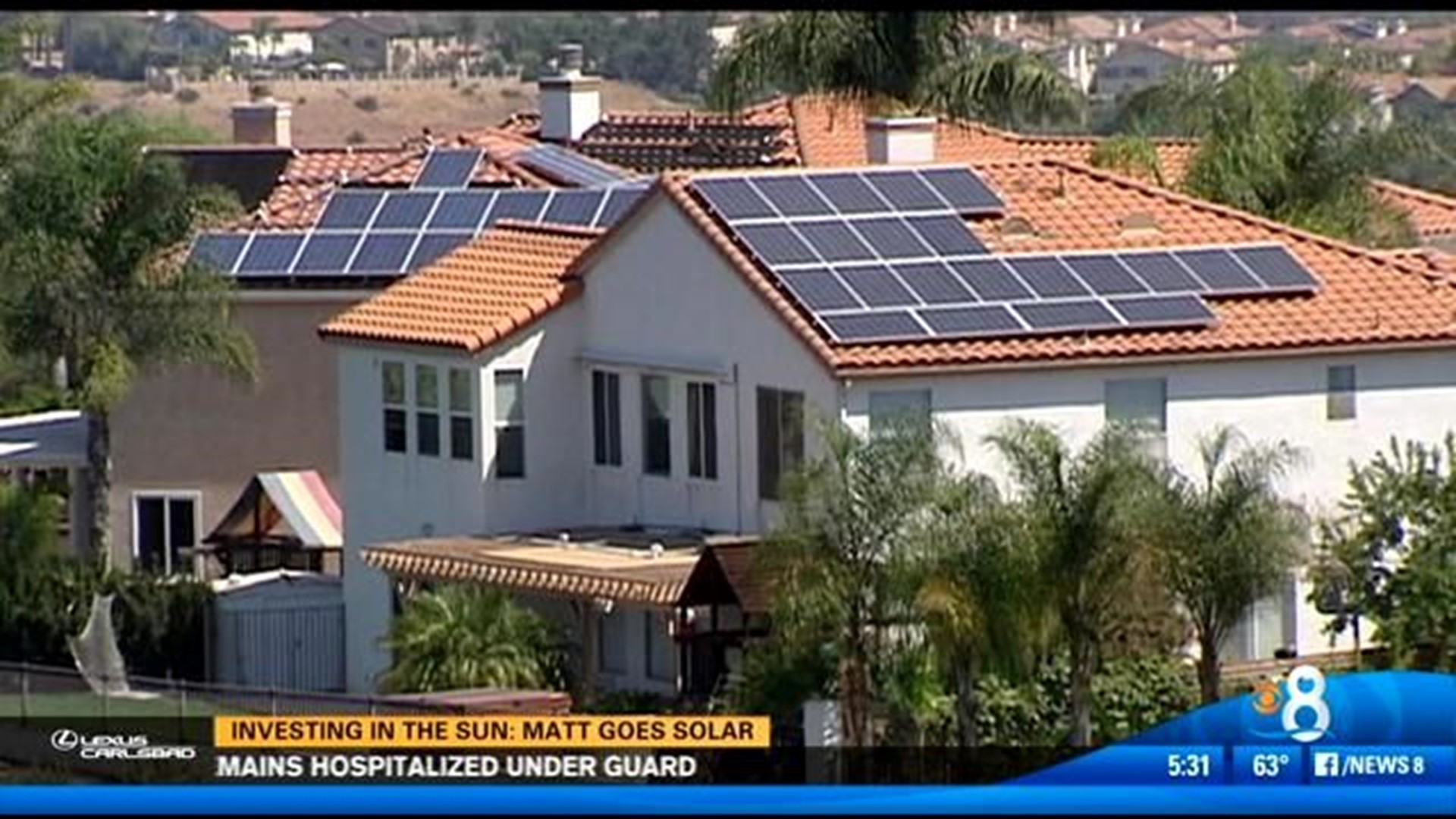SAN DIEGO (CBS 8) - Going solar is a hot topic, and something that a lot of people are considering, but questions and concerns remain, including, "Is it worth the investment?"
Here in Southern California, we pay extra for everything and shrug it off as part of the "sunshine tax" for living with such great weather. Utility bills are no exception, and they just keep going up (note September's recent rate increase!).
San Diego's year-round weather is world renowned for its sunshine, and you may have noticed in your neighborhood some San Diego county residents who are taking advantage of that sunshine in an effort to reduce or completely eliminate their ever-rising monthly electric bills.
Once we decided to make the investment in solar power, the process started with interviewing 15 different companies. Although they had different makes and models of solar panels and installations, most of these companies will do a workup of your current electric usage – and how solar panels will benefit you now - and in the long run.
Our interviewing process led us to go with Sullivan Solar Power, a company that's well established, has a great track record, provided dozens of references, and had a product that we liked – all black super-efficient solar panels. The next step was for installers to measure our roof, determine how many solar panels we could have installed and how those panels would most effectively collect the sun.
"This house is an excellent candidate for solar panels; the angle is just right and they'll get a lot of the sun once they are energized," Scott O'Hara of Sullivan Solar said.
Inside the garage is where the guts of the system is housed. This includes the inverter, which converts the solar electricity that's captured on the roof into useable electricity for the home.
"Our power is going to come from the solar panels on the roof, through the inverter, which converts it to AC power, and then goes on to feed the house," Mike DeLuci of Sullivan Solar said.
Before the panels are placed on the roof, your installer will determine the best layout for maximum efficiency.
The panels themselves are raised by ladder onto the roof -- although they're not that heavy – and then laid down for installation and screwed down tight.
"The panels, that's the fancy part of the system, but the guts in the garage is what really powers your house," DeLuci said.
Once everything is set up, there are still several steps in the process. A City of San Diego inspector must come out to make sure everything is done right; they check on the installation of the solar panels as well as the guts of the system in the garage. Because so many San Diegans are electing to go solar, you can understand these city inspectors are quite busy these days.
"We've had 15 calls for solar installation today," a city inspector said.
The next step is for the city to let SDGE know all is okay for the utility company to come back out and do their final inspection. Once that's completed, SDGE sends an email to let you know everything is OK for the homeowner to throw the switch and start producing power.
It's a great feeling to experience your power meter running backwards, as we're now producing more power than we use. So we're selling it back to SDGE.
Most companies will also provide you with an online monitoring setup so you can see how well the panels are working – how much power they are producing – even how much you are reducing your carbon footprint.
But the proof is in the payments. September 2012 was a hot month, and with our 2-story and air-conditioning, our power bill was over $400! In September of this year, with the panels, SDGE owed us $16. This is the kind of electric bill a homeowner could get used to.
A few notes you should know: First, my recommendation is to go with someone who is well established, has a good track record, lots of references, etc. There are several good companies out there. Solar is a big deal right now, and there are some small startups that may not be around three years from now when solar isn't such a big deal. So while there will probably be a two- or three-month wait to get your panels on the roof with an established company, someone who can squeeze you in in the next two weeks might not be there down the road. And you'll want them to be in case there's any problem.
Second, your property tax valuation of your home cannot go up with a solar installation through 2016. You can spend $35,000 on a pool or addition to the home, but your tax valuation will go up. Not so with a solar system – so that's a good thing.
Third, whatever you spend, you'll get a return on your money in about seven years, and maybe sooner if SDGE rates keep going up. We got estimates from $25,000 to $56,000. We ended up with a 28-panel setup that generated 110% of our normal electric usage (just in case we get an electric car or two down the road). The cost to us was $41,100, but there is still a 30 percent tax credit that reduces our real cost to around $28,000. That's a lot of money!!
But as an investment, I can't imagine a safer investment that will pay off seven years from now than knowing the sun will keep coming up in the East. Seven years from now we'll really be in the money. Until then, we're happy to get the checks from SDGE.
If you've got questions about our process, drop me an email at mbaylow@kfmb.com.

